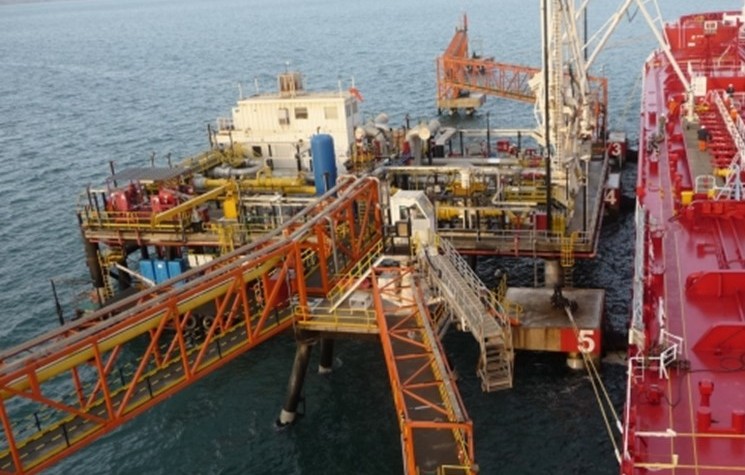CAMAC Energy plans to ramp up output to 14,000 bopd from the Oyo field in Nigeria

By Stewart Dalby
CAMAC Energy, which is listed in New York (NYSE CAK) and Johannesburg (CMC), is a full cycle E&P group focused on developing hydrocarbon resources in sub-Saharan Africa.
It currently holds nine licences in four countries covering an area of 43,000 sq km (10 million acres) including current production and other exploration properties offshore Nigeria, as well as exploration licences offshore Gambia, Kenya and Ghana, and onshore Kenya.
In Nigeria CAMAC was deriving output from the Oyo field on block OML 120 which is located 70 kms offshore Nigeria. CAMAC’s production had been 2000 bopd from the Oyo 5 and 6 wells. But this fell to 1,600 bopd and the company shut in these wells in order to complete the Oyo 7 and 8 wells to deliver production of 7,000 bopd each in Q1 2015. With further wells, output from Nigeria is expected to reach 20,000 bopd by exit 2016.
The company has the wherewithal to do all this. A successful listing on the Johannesburg Stock Exchange provided US$270 million to acquire the remaining 70 per cent of OML 120 and OML 121 from Allied Energy. Moreover, CAMAC is currently increasing their source of finance through a US$100 million senior credit facility.
The company’s IR spokesman in South Africa Chris du Toit says the company is fully funded for planned Oyo 7 & 8 wells and can look forward to US$150 to US$200 million in free cash flow, given prices current oil prices per barrel as production ramps up to the 20,000 bopd target. But this goal could be overtaken.
There is a great deal more to play for in Nigeria. The company announced in September that an upgraded independent assessment of the company’s prospective resources by DeGolyer and MacNaughton has increased the company’s un-risked P50 resources from 537 million barrels of oil (mmbbls) to 2,377 mmbbls in four of its exploration prospects within OMLs 120 and 121.
Beyond all this there are the exploration prospects elsewhere. In a landmark event for Kenya President Mwai Kibaki announced in March 2012 that that Tullow, in partnership with Africa Oil had struck oil in the Turkana District.
In May 2012, CAMAC was awarded Blocks L1B and L16 onshore and Blocks L27 and L28 offshore. The awards became effective in August 2012 and the company is named operator with a 100 per cent interest. The Kenyan government has the option to participate up to 20 per cent upon development. Over the last several years there has been a significant acceleration of interest in the country. The first offshore Kenya discovery was announced in June 2014 on Block L10A.
In Gambia, which is one of Africa’s smallest countries with a land area of 11,295 KM2, CAMAC Energy signed a contract in 2012 for the exploration and production of oil offshore in Blocks A2 and A3. The agreement was the first of its kind in the history of oil exploration in the country. The company says it is working signed with the Gambia National Petroleum Corp and oil ministry to build a mutually rewarding partnership. Offshore Gambia has good prospectivity for hydrocarbons and the area marks the northern extent of the Casamance – Bissau sub-basin which is characterised by halokinetic deformation and proven petroleum systems.
Finally, in Ghana CAMAC has a stake of 30 per cent in, and is named operator of, three previously discovered fields in shallow water depths of 55 – 110 metres offshore. These are South Tano — discovered by Phillips Petroleum in 1978. North Tano – discovered by Phillips Petroleum in 1980. And West Tano – discovered by Dana Petroleum in 2000. The company intends over the next nine months to determine the economic viability of developing the previously-discovered fields.
The interesting point is that two brokers have set a target get price of around US$1 for CAMAC shares, from Nigeria alone and nothing from Ghana, Gambia and Kenya. Aegis Capital Corp says the production from the Oyo field should be a short term catalyst for the shares while the exploration prospects in Nigeria in Miocene zones should drive up value in 2H2015. It has a target price of US$1 within the next 12 months
Angus McPhail, the analyst at CSL Stockbrokers meanwhile, has come up with a BUY recommendation and a target price of US$0. 99/share using a RENAV based valuation methodology which includes a core value (2P) of US$0.45/share and exploration value for one exploration prospect of US$0.54/share. The current share price is US$0.36 a share.
Comments (0)